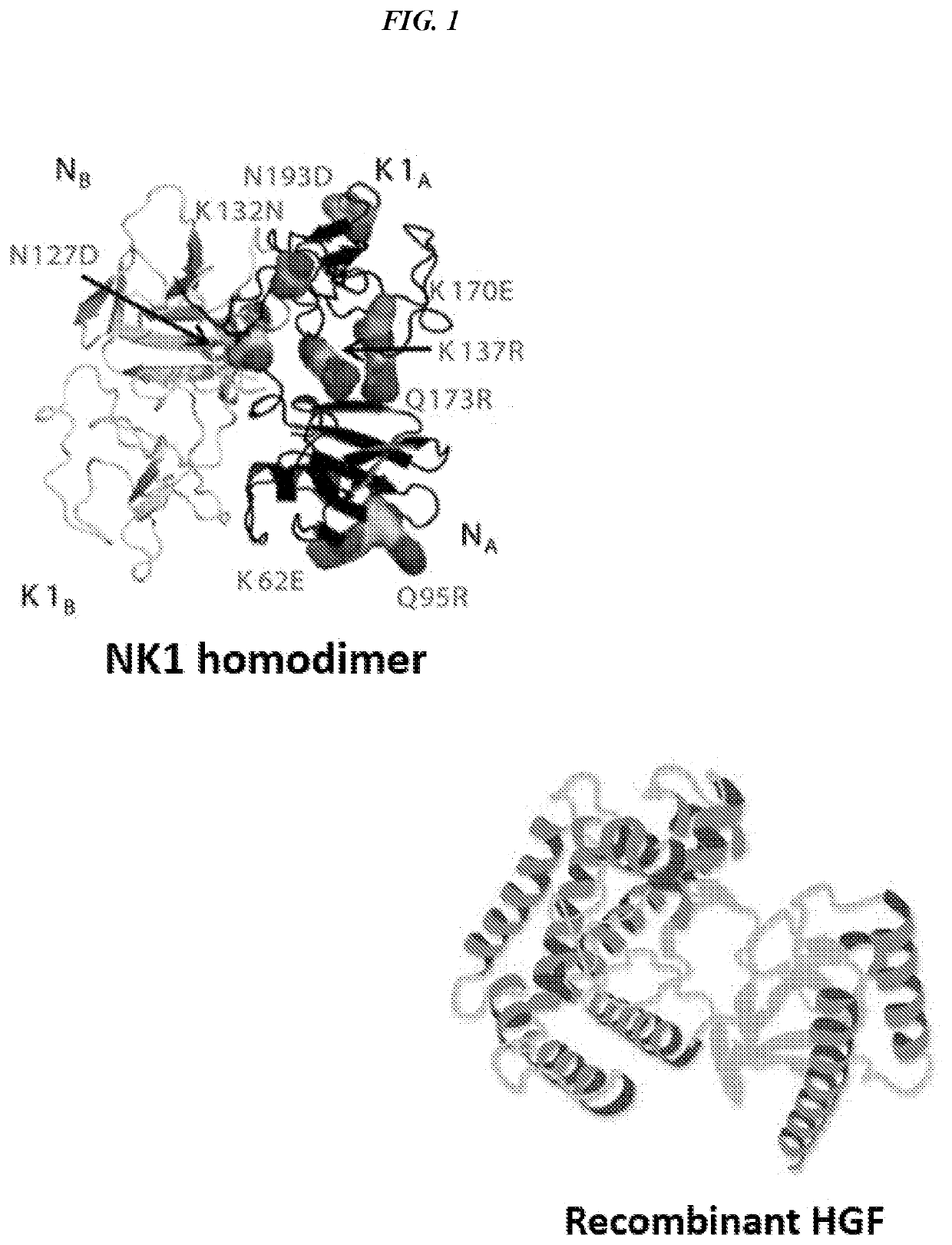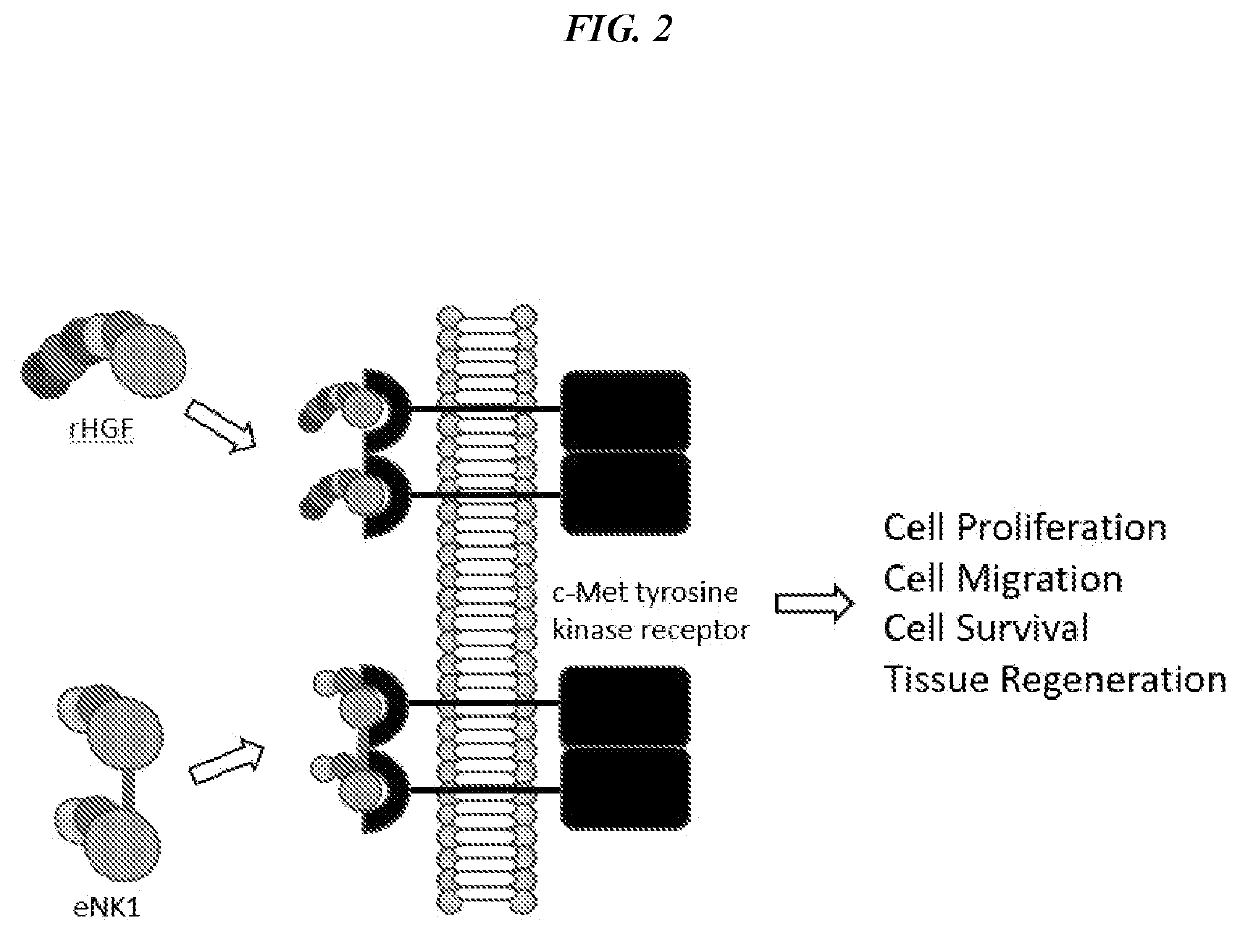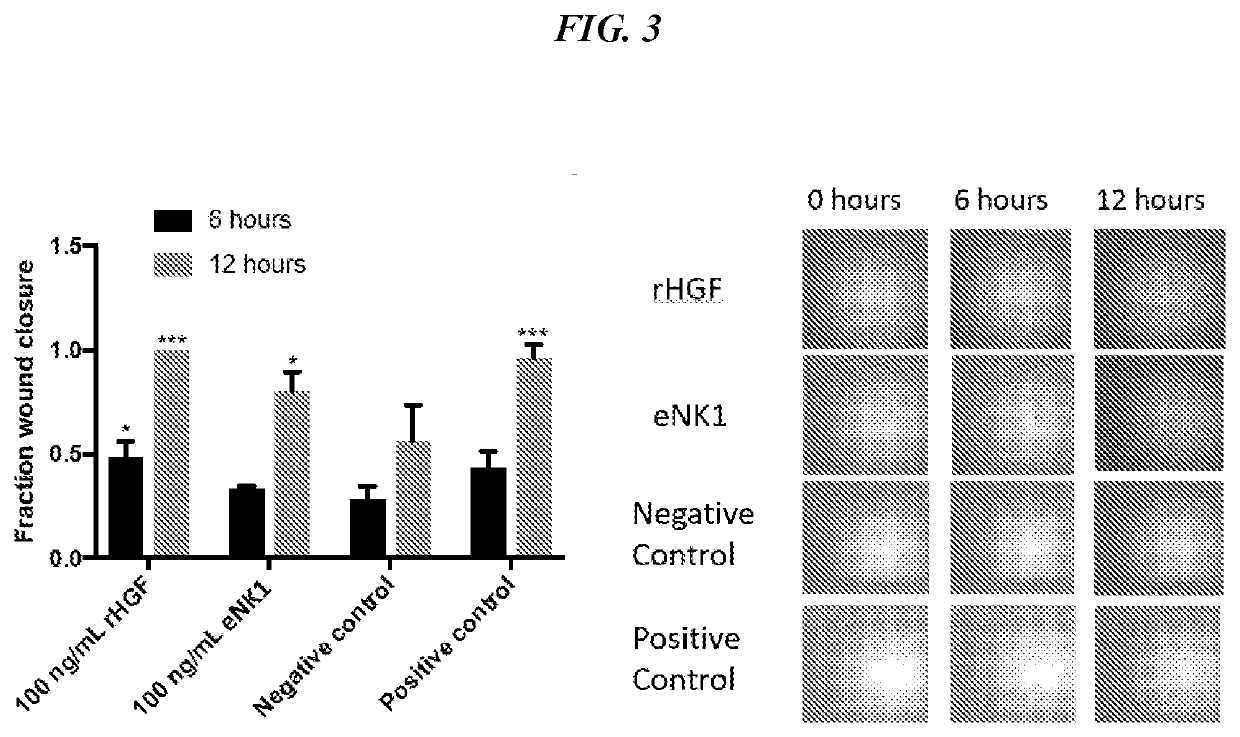Methods of ocular treatment using an engineered dimeric fragment of hepatocyte growth factor
- Summary
- Abstract
- Description
- Claims
- Application Information
AI Technical Summary
Benefits of technology
Problems solved by technology
Method used
Image
Examples
example 1
ered Dimeric Fragment of Hepatocyte Growth Factor Improves Corneal Epithelial Wound Healing in Vitro
Background
[0274]Hepatocyte growth factor (HGF) is a naturally occurring mitogen which plays a critical role in corneal wound healing. NK1 is an engineered fragment of HGF that weakly activates the same c-Met receptor. NK1 was previously engineered for increased stability and recombinant expression yield using directed evolution.
[0275]Disulfide-linked NK1 homodimers were created through the introduction of an N-terminal cysteine residue. The engineered NK1 covalent dimers exhibit nearly an order of magnitude improved agonistic activity compared to wild-type NK1, approaching the activity of full-length HGF. CD spectroscopy showed the dimer to have increased thermal stability over wild type NK1.
Purpose
[0276]Hepatocyte growth factor (HGF) is a naturally occurring mitogen which plays a critical role in corneal wound healing. This example describes the wound healing properties of an enginee...
example 2
ngineering of NK1
[0286]1.1 Protein engineering of NK1 through yeast surface display. Yeast surface display is a powerful directed evolution technology that has been used to engineer proteins for enhanced binding affinity, proper folding, and improved stability. Combinatorial libraries of NK1 proteins were displayed on the surface of the yeast strain Saccharomyces cerevesiae through genetic fusion to the yeast mating agglutinin protein Aga2p. Aga2p is disulfide bonded to Aga1p, which is covalently linked to the yeast cell wall. In contrast to most yeast display studies, the construct we used here tethered the displayed NK1 proteins to the N-terminus of Aga2p (FIG. 2 from U.S. Pat. No. 9,556,248). It was found for this ligand-receptor system that this orientation reduced steric constraints of receptor and antibody labeling described below. The NK1 proteins were flanked by N-terminal hemagglutinin (HA) and C-terminal c-myc epitope tags, which were used to confirm expression of the cons...
example 3
n of NK1
[0299]2.1 Soluble production of wild-type NK1 and NK1 mutants in the yeast strain P. pastoris. Briefly, DNA encoding for wild-type NK1, M2.1, or M2.2 containing an N-terminal FLAG epitope tag (DYKDDDDK) and a C-terminal hexahistidine tag were cloned into the secretion plasmid pPIC9K. Constructs were transformed into P. pastoris, and were selected for growth on YPD-agar plates containing 4 mg / mL Geneticin and screened for NK1 expression by Western blotting of culture supernatant. FIG. 7A (from U.S. Pat. No. 9,556,248) shows that M2.1 and M2.2 express well at 30° C., while wild-type NK1 expresses at much lower levels. This data is in agreement with previous studies that report engineering for enhanced protein stability using yeast-surface display also confers improved recombinant expression levels. However, reducing the expression temperature to 20° C. enabled efficient expression of wild-type NK1 (data not shown). NK1 and mutant expression were scaled up to 0.5 L in shake fla...
PUM
| Property | Measurement | Unit |
|---|---|---|
| Solubility (mass) | aaaaa | aaaaa |
Abstract
Description
Claims
Application Information
 Login to View More
Login to View More - R&D Engineer
- R&D Manager
- IP Professional
- Industry Leading Data Capabilities
- Powerful AI technology
- Patent DNA Extraction
Browse by: Latest US Patents, China's latest patents, Technical Efficacy Thesaurus, Application Domain, Technology Topic, Popular Technical Reports.
© 2024 PatSnap. All rights reserved.Legal|Privacy policy|Modern Slavery Act Transparency Statement|Sitemap|About US| Contact US: help@patsnap.com










